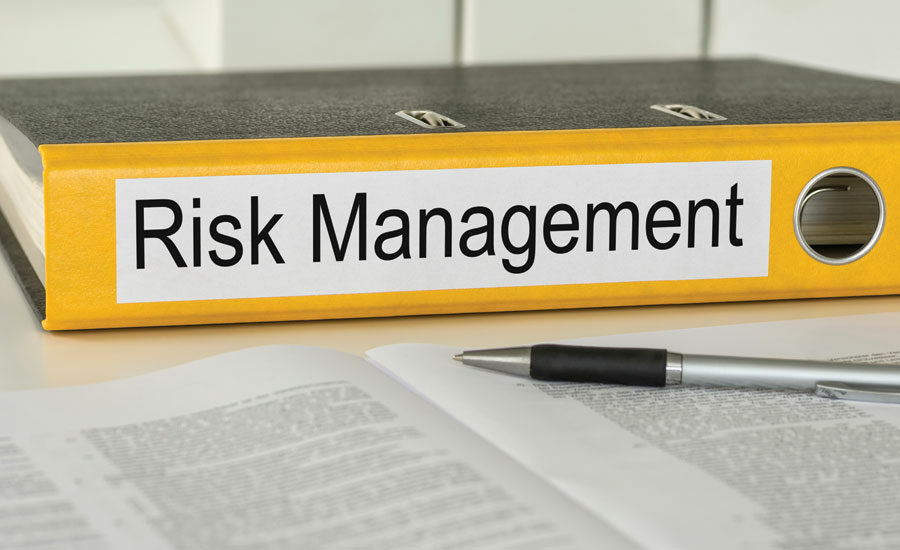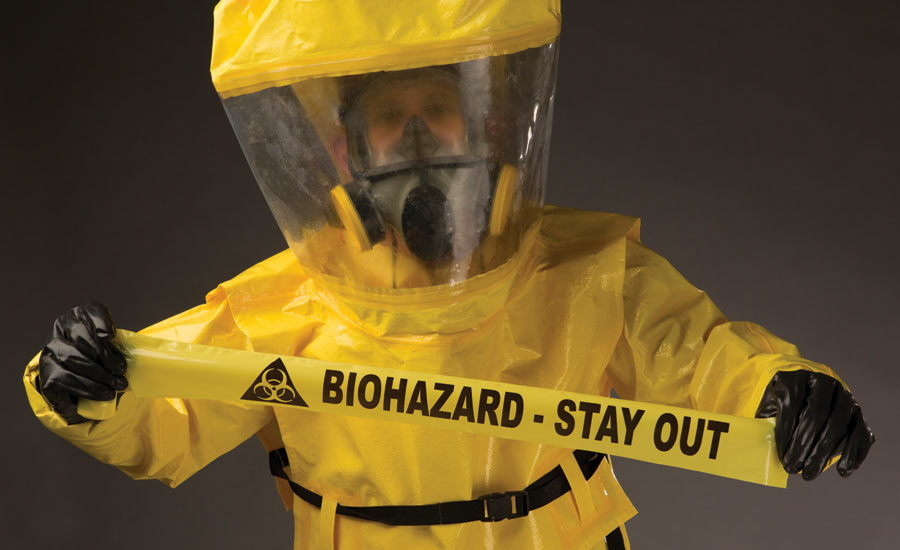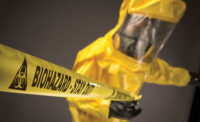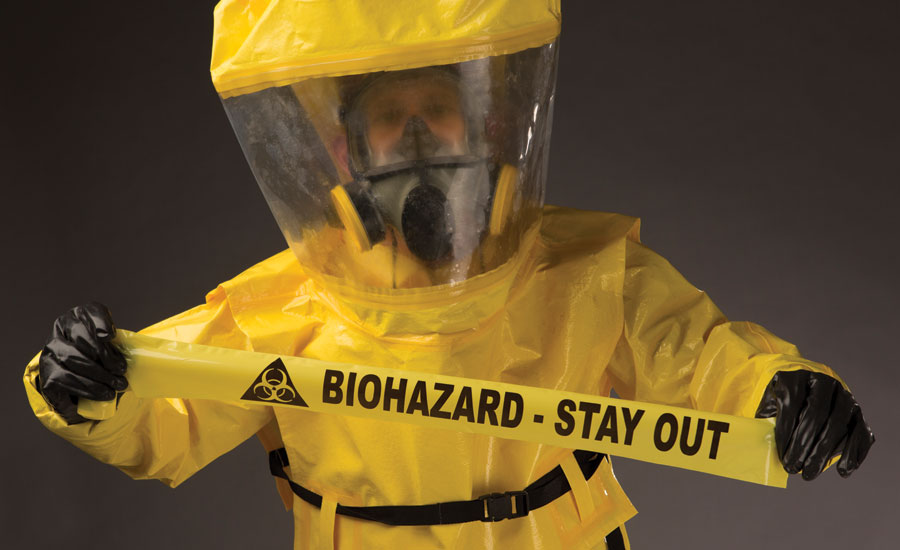Knowing the Risks & Reaping the Rewards of Biohazard Cleanup






Restoration firms providing biohazard cleaning services need special training and insurance coverage to manage the additional risks associated in performing this type of work.
When most restorers read the word biohazard, they immediately think of crime scene cleanup, which is a relatively new specialty in the restoration business. The IICRC is in the process of developing a special standard for biohazard work. Restoration firms get involved with biohazards more frequently than they think. However, the insurance you need to cover that work varies from a typical commercial cleaning project.
The current IICRC S500 Professional Standard for Water Restoration and the S520 Professional Standard for Mold Remediation contain good advice on managing the risks associated with mold and bacteria-contaminated category 3 water. Both have biohazard risks associated with them. In many ways, the biohazard job site resembles an asbestos abatement job site.
There is a lot more written on safe job site procedures for asbestos abatement than biohazard remediation. If a biohazard project is run like an asbestos abatement job, the exposure risks to employees and occupants would be low. Cost becomes a constraint in trying to treat every project with category 3 water like an asbestos abatement job. Especially with claims adjusters treating category 3 water jobs as if they are all category 1 water. It is actually uncommon for a claims adjuster to even know the categories of water as detailed in the IICRC S500. Referencing the asbestos abatement protocols, however, is still a good place to get ideas on job site safety and loss prevention.
There is an interesting quirk in the risk management picture between asbestos abatement and biohazard work; an asbestos abatement contractor’s liability insurance usually does not work very well for biohazard work. As you have heard us say before many times, the insurance coverage sold to nine out of 10 cleaning and restoration firms does not work very well either for biohazard work.
Outside of the actual job site exposure risks, a less common but more severe loss exposure is withholding information from parties that may be exposed to biohazards. The toxic mold insurance crisis at the turn of the century was set off when the third set of claims adjusters working on a leaking ice maker subflooring damage claim withheld information on the mold growing in the subflooring from the homeowner. It’s a long story, but basically the homeowner sued the insurance company for essentially injuring the family for a profit by not paying the claim on a timely basis. Insurance companies around the globe were shocked to see that a $300,000 homeowner’s insurance policy could produce a $32 million loss once personal injury from biohazards became involved. Although the restorers in that case were really not to blame, the repercussions of the case 17 years ago affect the availability of insurance on cleaning and restoration firms today.
Warning occupants of biohazards is a necessary step in managing the risks in biohazard work. Sometimes that is easier said than done. A commercial building owner is not going to want the restorers walking into a building in full personal protection equipment handing out brightly colored warning pamphlets to the occupants. In reality, the restorer needs to perform a balancing act between fully informing the owner of the property and maybe the claims adjuster of the inherent risks in the project and getting the project done on time and on budget. Referencing the IICRC guidelines can be a useful tool to objectively show that your recommendations, as a professional restorer, to safely perform the clean-up are reasonable.
Working in healthcare facilities presents a special risk management case for any restoration firm. Healthcare facilities, especially hospitals, actively manage their biohazard risks to avoid the transmissions of infections within the hospital. There are certification boards, third party inspections of the facilities, and even a rating system to evaluate how good the facility is at controlling its biohazard risks. Those techniques, however, do not seem to translate well to the facility’s maintenance personnel who are in charge of calling in the water damage restoration firms when something bad happens. Or as is more likely, the case on a day-to-day basis; the hospital building maintenance staff does not call in a professional restorer at all and simply handles water intrusion problems in their facilities with fellow staff.
This actually happened in a hospital for which we were finding environmental insurance. There was a category 3 water loss in the intensive care unit. The hospital staff had box fans running in the room. The patient had been moved to another room but there was no other containment of the air in the room. As a condition of the environmental insurance policy, the insurance company required the hospital to implement a Water Intrusion Loss Control Protocol before the hospital could buy environmental insurance, including coverage for biohazards. The key component in the loss control protocol was that maintenance personnel in the hospital were instructed by the financial officer who handled the insurance to call in a trained remediator under a master services agreement for all water intrusion events.
By decree of the financial officer for insurance purposes, the six facility managers in that case need to call the single restorer holding the master service agreement for all water intrusion events. The restorer has secured a long-term customer on an exclusive basis and will be called in more often than in the past. The healthcare provider also benefited by the master services agreement. ARMR was able to increase the amount of coverage for mold and bacteria ten-fold, free of any additional insurance cost to the property owner, simply by putting the master services agreement in place. In this example, both the hospital group and the restorer were ARMR clients so it was pretty easy to get the master drying services agreement into place.
An increasing biohazard operation being offered is specialized cleaning services for healthcare facilities and crime scenes. Taking on additional biohazard work could be profitable. However, it does present three unique business insurance challenges for business owners. One is related to cost, one is related to coverage, and one is related to insurance availability.
Because of the personal protective gear required for bioremediation, some worker’s compensation insurance regulators want insurance companies within their state to charge asbestos abatement rates instead of janitorial rates on the payroll of the workers doing the biohazard work, including mold abatement or any containment work. These discussions are ongoing with no national pattern. A state can change the rules mid-stream in a year. A restoration firm could unknowingly set themselves up for large, unexpected additional insurance premiums if the rules change.
There are two steps to take to avoid a big surprise on the cost of insurance. First, evaluate the current and pending state rules on the use of asbestos worker’s compensation rates for the biohazard work done. Second, minimize the payroll that could be subject to the higher work comp rates. Dedicate designated employees as the bio-remediators. In the worker’s comp rating guidelines, if an employee works at a desk 51 weeks of the annual policy term, but is a bio-remediator for one week, the entire payroll of the office worker will be charged the bio remediation worker’s compensation rate. Try not to step into this trap.
Earlier it was mentioned that there is a quirk in the insurance coverage of bio-remediators, including the restorers working on category 3 water jobs. The reality is general liability insurance policies sold to nine out of 10 restore contain this exclusion in their general liability insurance policy.
Any loss, cost or expenses arising out of the abating, testing for, monitoring, cleaning up, removing, containing, treating, detoxifying, neutralizing, remediating or disposing of, or responding to, or assessing the effects of, “fungi” or bacteria, by any insured or by any other person or entity.
This exclusion, which appears in a very common endorsement added to the general liability insurance policies of the vast majority of restoration firms, is nothing short of a “you cannot be in the biohazard remediation business” exclusion. It is worth noting the exclusion applies to all types of bacteria and fungi in any quantity, including by default category 3 water. Restorers do not need to go into crime scene cleanup services or mold remediation before this insurancequirk hits them.
There is a lot of confusion on this point. The purchase of the best contractor’s pollution liability insurance policy in the world will not fix the insurance coverage gap created by the above exclusion in the general liability insurance policy.
The good news on this insurance problem is the fix to the general liability insurance policy, it is essentially cost-free. The insurance companies that write policies that actually insure category 3 restoration without the glitch shown above, do not charge more for bioremediation work. The policies they sell combine the general liability and contractor’s pollution liability into a single package insurance policy. These insurance packages do not contain the “you cannot be in the biohazard remediation business” exclusion. The higher quality versions of these packaged insurance policies also contain professional liability coverage for the work performed under the IICRC professional standards. That coverage is also provided essentially cost free. Of course a business liability policy that insures a firm for what they do for a living might cost more than one that technically excludes any loss associated with a remediation job site involving a potential of speck of fungus or bacteria. But sometimes the package insurance policies actually cost less than the general liability policies with the bio job site exclusions.
The third challenge with biohazard work is insurance availability. As a result of the toxic mold insurance scare mentioned above, the vast majority of insurance companies have rules that say their underwriters should not insure “fire and water damage restoration firms.”
Today, it is very common to find restoration firms insured as “janitorial” firms or “carpet cleaners.” If the janitorial firm or carpet cleaner goes into the biohazard remediation business, they can trigger the undeniable truth that the insurance company is insuring more than traditional janitorial work. Once recognized, the underwriter following the rules will issue a notice that they will not renew the policy or cancel, or they might cancel the policy mid-term because of a material change in the risk. In either case, that is a black mark with the restoration company that they will live with for the next five years in the insurance underwriting process.
The inquisitive reader may be thinking at this point, “Hey wait a minute I have been doing category 3 water jobs for years, what’s the difference between that and bioremediation work?”
The answer is from a liability insurance coverage point: there is no difference. However, very few people in the insurance business have ever heard of category 3 water and they have no idea what it is; this applies underwriters and claims adjusters alike. Ignorance is bliss. They go on with business as usual without connecting the dots between insurance exclusions for bacteria by definition affecting category 3 water losses. However, even in a blissful state, the fundamental coverage flaw in a restorer’s insurance coverage will still exist. Coverage flaws tend to be discovered in any large claim a contractor might make on their general liability insurance policy. That is not the time to be discovering a fundamental business insurance glitch on the restoration firm.
This potential situation with restricted insurance can easily be avoided by making sure the selected insurance company displays some degree of expertise in the restoration business, as opposed to the cleaning business.
Good insurance for biohazard work is readily available in specialized business insurance packages designed for fire and water damage restoration firms.
The point of all of this: biohazard work requires special training and risk management protocols. The risks associated with the work are manageable. If a firm has structured their business insurance to address category 3 water without fundamental coverage glitches, that same insurance will allow them to get into the biohazard clean up business. However, nine out of 10 restorers today have problems on their insurance coverage for category 3 water and should not venture into wider bio remediation work without fixing the business insurance coverage glitch for biohazards.
The good news is good quality insurance coverage for biohazard work is readily available today.
Looking for a reprint of this article?
From high-res PDFs to custom plaques, order your copy today!









